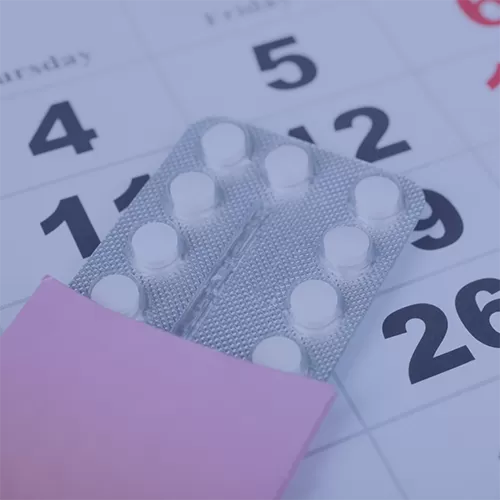
April 7 - World Health Day and this year it's under the slogan “A healthy start in life is the key to a prosperous future”.
Childbirth is a significant stage in a woman's life, requiring not only care for the baby, but also attention to her own health. However, many women underestimate the likelihood of pregnancy in the first months after childbirth, especially if the menstrual cycle has not yet recovered.
According to research, 95% of women after childbirth (within the first 12 months) do not want another pregnancy in the next two years, but 70% of them do not use contraception. This leads to unplanned pregnancies, and up to 28% of women have an abortion within the first year after childbirth.
Lack of sufficient interval between pregnancies increases the risks to the health of the woman and the child, especially if the previous birth was complicated or performed by cesarean section. Medical guidelines indicate that the optimal interval between births is 2-3 years, and after cesarean section at least 3 years.
Postpartum contraception plays a key role in:
- Reducing the number of unwanted pregnancies and abortions;
- preventing complications in subsequent pregnancies;
- Preserving breastfeeding if an appropriate method is chosen.
What contraceptive methods are available after childbirth?
There are several contraceptive methods that vary in effectiveness, effect on lactation, and ease of use.
- Sexual abstinence (withdrawal)
- It is the only method with 100% effectiveness.
- Does not affect breastfeeding and does not require medical intervention.
- It is usually practiced in the first 6-8 weeks after childbirth while the body recovers from pregnancy and labor. - Natural methods
- Calendar method
This method is based on the calculation of fertile days (ovulation time) in which the couple abstains from sexual intercourse or uses barrier methods.
However, immediately after childbirth, this method is not suitable, as the menstrual cycle recovers gradually, may be irregular, and ovulation may occur unpredictably.
With a regular cycle, its effectiveness is no more than 50%. - Barrier methods of contraception
- Condoms
Easy to use, available over-the-counter.
Have no effect on lactation.
Provide additional protection against sexually transmitted infections.
It can be used immediately after childbirth.
- Spermicides (vaginal creams, suppositories, gels, tablets)
Can be used during breastfeeding.
Additional protection when used in conjunction with condoms.
Some types help with vaginal dryness, which is relevant during lactation.
Injected 5-20 minutes before intercourse, the contraceptive effect lasts up to 6 hours. - Hormonal contraception
Hormonal medications are highly effective in preventing pregnancy, but it is important to consider their effect on lactation.
- Mini-pills (pure gestagens)
Permitted during breastfeeding.
You can start taking it 6 weeks after delivery.
Do not affect the amount and composition of breast milk.
They are taken daily, without interruption, at the same time.
Fertility is restored immediately after withdrawal of the drug.
- Combined oral contraceptives (COCs)
Not recommended during lactation as may reduce milk production.
Suitable for women who are not breastfeeding or have completed lactation. - Intrauterine devices (IUDs)
The intrauterine device is one of the reliable and long-term contraceptive methods, which is convenient for women who do not plan to become pregnant in the coming years.
- Does not affect lactation or the health of the baby.
- Immediate contraceptive effect after insertion.
- Duration of protection - up to 5 years.
- The possibility of rapid restoration of fertility after removal of the IUD.
When can an IUD be inserted?
- 4 weeks after delivery, optimally - 6-8 weeks.
- После кесарева сечения – не ранее 6 месяцев.
However, long-term abstinence can be difficult to implement in married couples, so it is important to discuss other contraceptive methods in advance.
- Lactational amenorrhea method (LAM)
Prolactin, the hormone responsible for the production of breast milk, suppresses ovulation. However, this method works only if three conditions are met:
- The baby is exclusively breastfed with no supplementation or substitutes.
- Feeding is on demand, without long night breaks.
- No menstruation.
If these conditions are met, the effectiveness of the method reaches 98%, but it only works for the first 6 months after childbirth.
Additional aspects: nutrition and vitamins
During breastfeeding, the female body has increased need for vitamins and minerals. Lack of important substances can adversely affect the quantity and quality of breast milk.
Therefore, regardless of the chosen method of contraception, it is recommended to take vitamin and mineral complexes to maintain the health of mother and baby.
Postpartum contraception is an important aspect of women's health to avoid unwanted pregnancy and maintain a comfortable couple's relationship.
The choice of method depends on the individual characteristics of the body, plans for the future and the need to preserve breastfeeding. The doctor will help to choose the most appropriate option.



